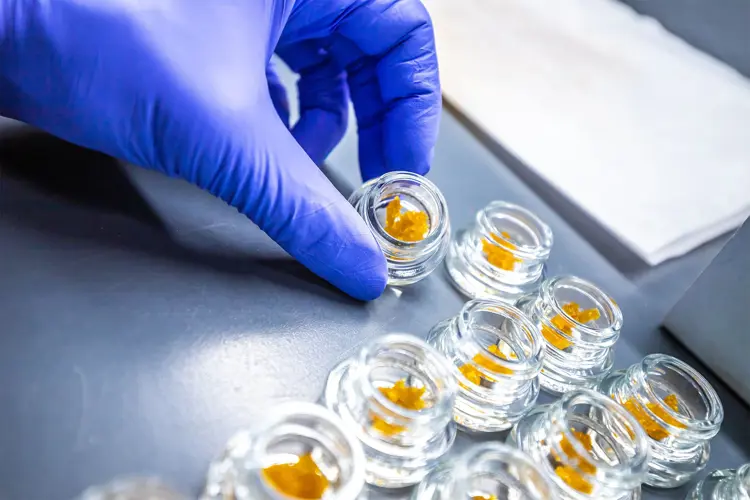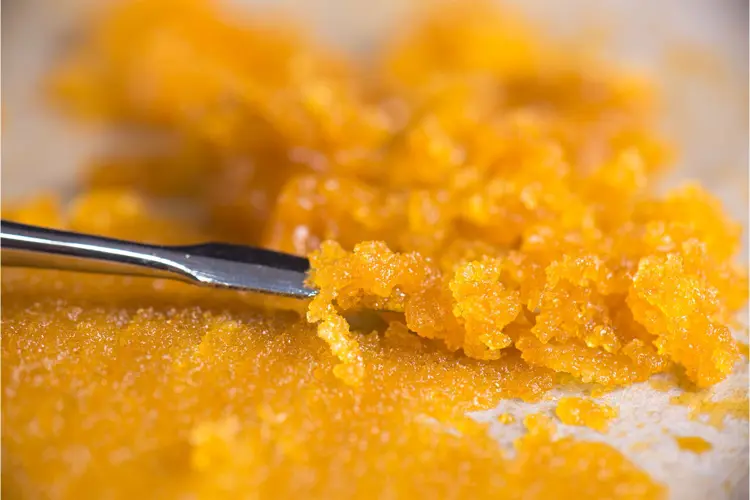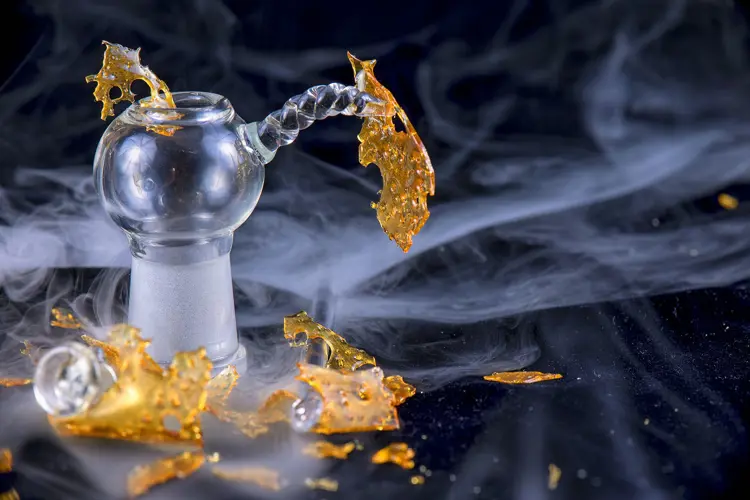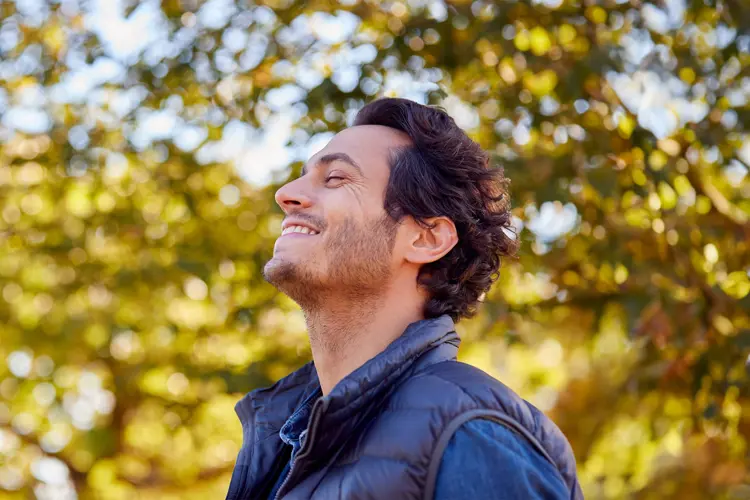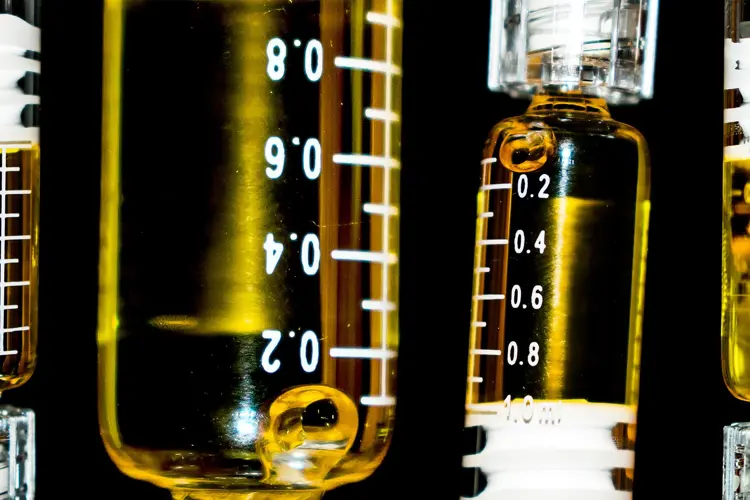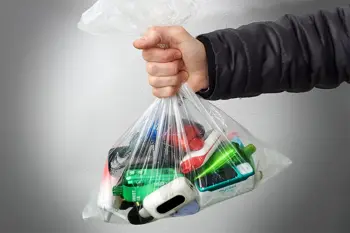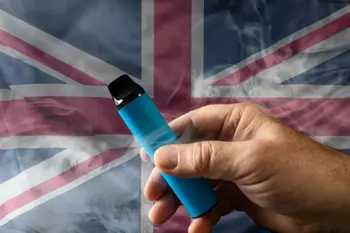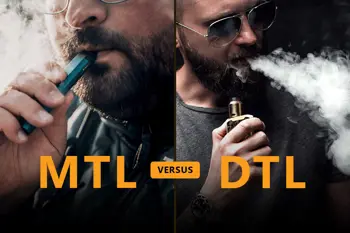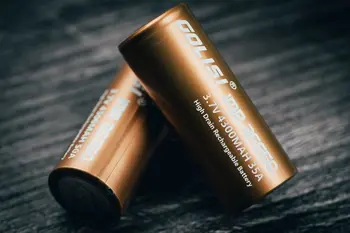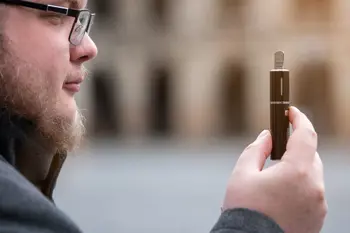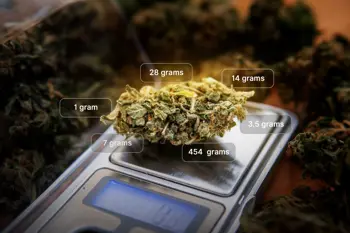As cannabis products have become more accessible, there’s more opportunity to innovate than ever before. Manufacturers are constantly developing new ways to extract and process the valuable cannabinoids and terpenes in marijuana and hemp.
Live resin is a type of cannabis concentrate that has rapidly become one of the market’s most popular. It’s hard to believe that it didn’t exist until the early 2010s—before then, weed vapers had fewer terpene-rich concentrate options to choose from. Terpenes are an essential component of weed’s aroma, flavor, and therapeutic potential. They’re also the first to go when cannabis oxidizes or is exposed to heat.
Although terpene content is generally cut in half when flower is dried and cured, live resin eliminates this stage of production entirely. To create live resin, manufacturers work exclusively with flash-frozen bud, allowing the delicate and volatile terpenes to remain intact.
How is live resin made?
Live resin isn’t a cannabis extract you can make at home. It takes specialized equipment and a great deal of expertise, which is why live resin products tend to be on the expensive side. As with some other concentrates, live resin is extracted using hydrocarbon solvents. However, in live resin production, the process must be timed carefully and tightly controlled.
First, manufacturers harvest the flower and quickly freeze it at subcritical temperatures. Terpene content drops even before heat is applied. The longer you wait after harvesting, the more terpenes will be lost.
The flower can remain frozen for a maximum of 36 hours. At this point, it is removed from the freezer, and extraction begins. A blend of butane and propane is applied to the flower. Depending on the manufacturer, the solvent can contain varying ratios of these chemicals. A higher propane content preserves the most terpenes.
Heat must be minimized at every stage. Keeping the solvent chilled also helps to reduce water solubility—and the less solubility, the better.
After the flower has been washed with the solvent in a closed-loop extractor, heat is applied to evaporate leftover butane and propane. The temperature used is lower than that used in similar processes for other concentrates. Finally, you’re left with an extract that can be incorporated into a variety of products, including live resin vape carts.
Does live resin get you higher?
It’s hard to say whether live resin will get you higher than other cannabis concentrates or extracts.
Going by THC concentration alone, distillate often beats out resin. Certain waxy concentrates, such as badder or sugar, have a similar THC content. Several of these concentrates can even be made from live resin extract. In that sense, there’s a good deal of overlap, and the comparison of effects becomes more complex.
While most live resin products contain anywhere between 60% and 90% THC, distillates typically clock in at 90% or greater. Some high-quality isolates contain a whopping 99% THC. But THC content doesn’t tell the whole story.
The strength of your high isn’t just dependent on the THC percentage. It’s possible for cannabinoids and terpenes to work together, boosting the effects of other compounds. Maybe one cannabinoid will improve another’s ability to bind to certain cannabinoid receptors. This can lead to a different type of high, and that high could feel more powerful.
Some fans claim that live resin—with the flower’s terpene content mostly intact—has more potent effects than extracts like distillates, but ultimately, it depends on each person’s perceptions of the high.
Psychoactivity of hemp live resin
The world of hemp live resin is far more nuanced than standard marijuana products. Generally speaking, live resin hemp carts don’t contain true live resin. Rather, they’re made with hemp distillate and supplemented with live resin terpenes. These carts will only get you high if a psychoactive byproduct is added in.
A delta 8 cart containing live resin terpenes isn’t true live resin, but it’s a hemp product that will get you high. It won’t necessarily get you higher than other hemp carts, though. That still depends on the product and the individual consuming it.
How to consume live resin
You have a few options if you’re interested in giving live resin a try. After the extract is produced via solvents, manufacturers can create a range of products. Some product types are better suited to specific consumption methods.
Vape oil is one of the most convenient and popular, but waxier options exist for dabbing. It all depends on how the resin is treated after extraction—and what you prefer to use.
Live resin oil vape carts
Live resin vape carts are easily the most convenient mode of consumption. As long as you have a 510 thread battery lying around, you have everything needed to use carts. Just remove the mouthpiece stopper and screw your cart onto a charged battery.
The oil in a live resin cart is less viscous than a waxy concentrate. Most live resin oil is a rich golden color, although this can range from light to deep. Dull oil could indicate a knock-off product. Watery or overly thick oil could also be a red flag.
Maintenance is an essential part of live resin carts. Carts are simple to use but can degrade or go bad if kept in the wrong conditions. Terpenes, in particular, are delicate and can be destroyed if you store live resin carts in a hot, humid environment. Sunlight is a no-no if you want to enjoy all the benefits of your cart.
To keep terpenes intact, store live resin vape carts somewhere cool. Stick to room temperatures between 50° and 70° F, or 10° and 21° C. Humidity and sunlight can even lead to mold growth in live resin oil.
Live resin is desirable for its high terpene content, but preservation of those compounds is partly left to the consumer.
Electronic vaporizers and dab pens
If you’re working with live badder or sauce, you’ll need to use a device designed specifically for dabs. You have a few options: dab pens, dab rigs, and certain portable or desktop vaporizers. Only load live resin dabs into a weed vaporizer made to handle concentrates, not those used exclusively for dry herb. Some devices can vaporize both.
No type of device is superior to the others. It comes down to your preferences. Do you want simplicity or a high degree of customizability? Are you seeking an intense high or a more relaxing one? Still, no matter your preferred route, waxy or viscous concentrates can get messy. Make sure you have a dabbing tool on hand.
Desktop setups are more powerful than the handheld alternative. If portability isn’t an issue and you’re looking to maximize vapor output, you don’t want a pen. Desktop or large, advanced portable vaporizers have more customization options, including temperature controls. On the other hand, simple dab pens are best if you prioritize ease of use and convenience.
The chamber of your device needs to be cleaned out after use, or else you’ll face residue buildup. A chamber full of waxy residue won’t provide satisfying, clean-tasting hits. Rich, “terpy” flavor is one of live resin’s real perks, so that’s the last outcome you want.
Dab rigs
Traditional, non-electronic dab rigs may feel old school to some, but they’re still a popular way to vaporize live resin.
Proceed with caution if you’ve never used a butane torch and nail to vaporize concentrates. This method comes with additional safety hazards, and you can’t sub in a match or lighter. It’s also more difficult to gauge temperature when you’re using a torch. Without the necessary expertise, you risk scorching your concentrate.
Dab rigs involve extra steps and considerations. Electronic devices don’t require you to load water into your device, but this is essential if you’re using a traditional rig.
E-nails and e-rigs are a solid compromise between electronic devices and a dab rig. Many of them can be fixed to your rig, allowing users to nix the torch and control temperatures precisely.
Pros of live resin
One of the biggest live resin benefits is written on the tin. It often has an expansive terpene profile, especially compared to distillates or isolates. Concentrates from dried and cured flower—or any method utilizing high heat—are going to lose a huge portion of natural terpenes. Even if terpenes are reintroduced at a later stage, you still won’t experience the plant’s authentic terpene profile.
Certain weed vapers prioritize terpenes more than others. Abundant terpenes produce a stronger aroma and flavor, and for some, that’s a key part of the vaping experience. Terpenes may also have a synergistic relationship with one another and with cannabinoids. This is known as the entourage effect. It’s possible that a diverse range of terpenes and cannabinoids will lead to unique and sometimes more powerful effects, individually and overall.
Recreationally, terpenes have the potential to aid in relaxation, focus, and energy. A number of medical uses are also being explored. Certain terpenes may elevate the anti-inflammatory or pain-relieving qualities of cannabis. You aren’t going to receive medical treatment from a live resin vape, but the point stands: terpenes aren’t anything to scoff at.
If you’re seeking the so-called entourage effect, live resin and full-spectrum products offer the best experience. The effect’s full potential isn’t known. For now, we only have user anecdotes stating that it leads to a smooth, long-lasting high.
The bottom line: live resin is a fantastic choice for weed vapers seeking potency, robust flavor, and a well-rounded high.
Cons of live resin
Live resin isn’t a miracle extract. In all fairness, much of this comes down to personal preference. A downside to one individual may be a benefit to the next.
As a full-spectrum product, live resin more or less retains the authentic cannabinoid and terpene profile of fresh flower. There’s no way to minimize or isolate a particular component. This is less ideal if you want to hone in on anything specific, whether it’s a terpene or cannabinoid. You aren’t going to find authentic live resin that’s high in minor cannabinoids like delta 8 THC.
Some live resin products contain cannabinoids or terpenes that were added after extraction. In these instances, the oil may be a distillate with live resin terpenes added in. Some users appreciate this middle-ground solution if they’re seeking tastier hits but also want high levels of a non-THC cannabinoid.
Specific techniques and solvents can maximize THC or terpene content, though only to an extent. You’re going to encounter a wide range of terpenes in any live resin product. Live resin isn’t going to be low in THC, either.
Cost is an additional concern for many weed vapers. High-quality live resin carts are on the pricier end of the spectrum, and they aren’t going to fit everyone’s budget.
Live resin side effects
Live resin isn’t a dangerous substance, but you can’t isolate the effects you want from those you don’t.
As with any cannabis product, it’s possible that you’ll encounter side effects after live resin consumption. The severity and types of side effects vary from person to person. If these effects are severe, cease use right away.
Some of the most common live resin side effects include:
- Bloodshot or dry eyes
- Dry mouth
- Drowsiness
- Anxiety
- Dizziness or impaired focus
- Changes in appetite
The higher your live resin’s THC content, the more likely you are to experience THC-related side effects. Proceed with caution if you’ve previously dealt with undesirable effects after THC use. Serious side effects, such as panic attacks or hallucinations, are less common, but they can also occur. Vomiting is another uncommon risk.
Take it slow your first time using live resin. THC-rich extracts and concentrates can be overwhelming at first, especially if you’re dabbing. It’s best to start with a small dose.
Live resin vs. distillate vs. rosin
By its very nature, live resin uses the whole flower, with no distilling involved. No one gets to pick and choose which cannabinoids appear in the extract.
There lies the core of the live resin versus distillate debate: the former is full-spectrum and contains a range of cannabinoids and terpenes, while the latter is intended to isolate a specific component.
Rosin is in a different category, entirely. Both live resin and distillate are produced using solvents like butane or propane. To craft rosin, extractors use heat and pressure exclusively. Drying and curing is a key step in standard rosin production, while live resin relies on flash-frozen flower.
Live rosin is also an option. Like its traditional form, no solvents are involved in production. But rather than dried and cured flower, live rosin utilizes frozen bud, much like its resin counterpart. Similarities aside, live rosin production is even more arduous, and that’s reflected in the extract’s average cost.
Is live resin legal?
As a method of production, live resin isn’t illegal. However, all the standard cannabis legal issues apply to these products. Specific restrictions vary from country to country and from state to state.
Marijuana is a Schedule I controlled substance in the United States. Regardless, state governments get the final say. Many have legalized THC-dominant cannabis products, whether recreationally or medically. You can only purchase or possess authentic live resin in regions with legal marijuana. Further, you can’t cross state lines or fly with live resin products, even if you’re traveling between two legal states.
Hemp products containing live resin terpenes are legal under the 2018 Farm Bill. As long as the cart or concentrate contains under 0.3% delta 9 THC, it’s considered a hemp derivative. Make sure you know your state’s hemp laws before buying hemp-derived cannabinoid products.
Where to get live resin vaping products
For those with legal marijuana access, live resin carts and other products aren’t difficult to find. They’re popular with weed vapers and dabbing enthusiasts alike. Retailers are well aware of this fact, leading most dispensaries to carry a range of live resin products.
Pure live resin can be purchased from legal dispensaries. The keyword “live resin” is also widely used in the hemp sphere, although products vary in content and quality.
Different hemp manufacturers will approach live resin in their own way. No matter where you’re shopping, check to see whether the product is a distillate containing live resin terpenes. Product descriptions, ingredient lists, and customer feedback can help clarify the product’s origin. Certificates of Analysis (COAs) are essential for safety, but they also offer a detailed breakdown of the product’s cannabinoid content.
You have a fair share of online and in-person retailers to choose from if you’re seeking hemp carts with live resin terpenes. The waters are far murkier if you’re seeking genuine live resin from hemp.
